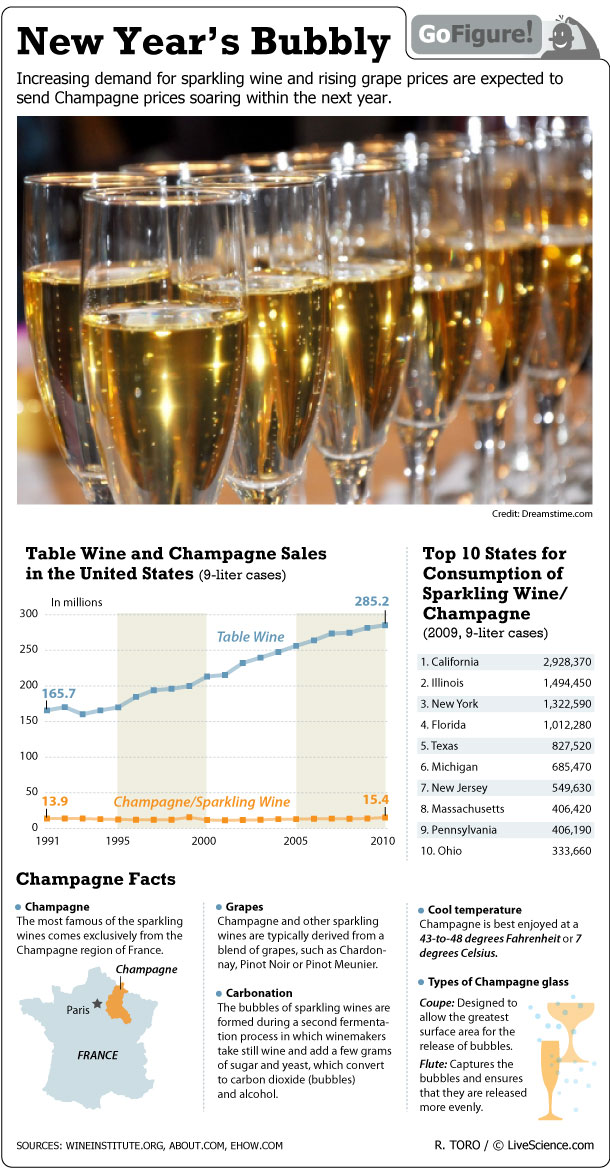Champagne Facts for the New Year (Infographic)

There's lots more than alcohol and New Year cheer inside your flute of champagne. Bubble-y science abounds.
For instance, scientists have found that to get the most fizz out of your champagne, you should hold the glass at an angle while you fill it, rather than pouring the champagne straight down.
The secret is in the bubbles, or more precisely, the dissolved carbon dioxide that creates them once the bottle is uncorked and poured into a glass. Unfortunately for champagne drinkers, much of the carbon dioxide escapes without creating bubbles. That study, published in 2010 in the Journal of Agricultural and Food Chemistry, showed that a beerlike pour creates less turbulence (when the drink hits the glass), and hence, allows less carbon dioxide to escape into the air.
And those bubbles do more than pop in your mouth. Research reported in the fall of 2009 in the journal Proceedings of the National Academy of Sciences, revealed the 10 million or so bubbles that pop from a glass of the sparkling wine carry loads of aromatic molecules that ultimately spray into the air right under your nose.
All that bubble-y goodness locked up in a bottle of champagne can also turn dangerous, according to Dr. Mark Melson, assistant professor of Ophthalmology and Visual Sciences at the Vanderbilt Eye Institute. "Eye injuries from flying champagne corks, especially around the holidays, are fairly common," Melson said back in 2009.
Here are some tips for safe uncorking this New Year's:
- Make sure the bottle of bubbly is chilled. If left warm the pressure is more likely to build.
- Don’t shake the bottle. This only increases the speed of the cork upon opening.
- Place a towel over the top of the bottle to provide an additional shield.
- Keep the bottle tilted at a 45-degree angle, pointing away from people.
- Hold the cork while twisting the bottle to break the seal. Keep your hand over the cork.
- Never use a corkscrew to open a bottle of champagne. It will only serve as a larger, more dangerous projectile.
If you somehow get smacked in the face, don't touch the eye. Seek medical attention immediately, Melson said. Here's to a bubble-filled holiday!
Sign up for the Live Science daily newsletter now
Get the world’s most fascinating discoveries delivered straight to your inbox.

